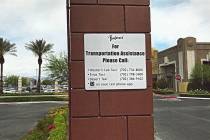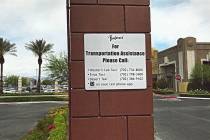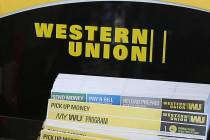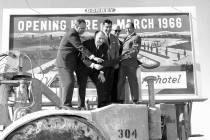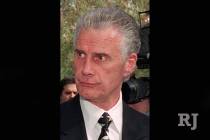Mob Museum has its highlights, but where’s that tale of Reid?
Museums are personal. What grabs me may not grab you.
At the U.S. Holocaust Memorial Museum, I cried at the massive pile of shoes that belonged to people who died in concentration camps.
At the Nixon Presidential Library and Museum, I remembered the sweet letters Richard Nixon wrote his wife when they were courting.
But I also remembered how Watergate was glossed over, until a recent and controversial fix by museum experience designer Patrick Gallagher, who also helped create the Mob Museum and happened to be the guide of my media group tour Monday.
At the Mob Museum, there were four personal favorites for me.
The first was the restored courtroom where the Kefauver hearings on organized crime were held. Museum designers combined real footage with re-creations, and suddenly it was 1950 again with hoods and molls squaring off against politicians in televised hearings with both sides playing to the cameras.
The second was the bloody, graphic and not-for-children movie about mob hits. Did that glorify the mob? Absolutely not.
The third highlight was listening to the actual FBI tape from 1979 in which casino executive Carl Thomas told mobster Nick Civella about how to skim at the Tropicana. The museum used quotes I've printed and reprinted over the years, but I'd never heard the actual voices, I'd only imagined them.
"Every time I come here to see you, I jeopardize everything I have," said Thomas, one of the golden boys of gaming, seemingly clean-cut and honorable and symbolic of the "new" Las Vegas, but who in reality was a mob tool. His voice sounded more thuggish than I had imagined.
My disappointment with the National Museum of Organized Crime and Law Enforcement is also personal -- the things that were missing.
Where was the dramatic television footage of mob associate Frank Rosenthal screaming at then-Gaming Commission Chairman Harry Reid when his gaming license was denied? What about playing the tape in which mobster Joe Agosto declared, "I gotta Cleanface in my pocket."
Cleanface was a code name for Reid, although Agosto's claim was later deemed by state gaming regulators to be boasting and untrue.
I foretold in 2010 that the Cleanface elements would never be in the museum because Reid is now the U.S. Senate majority leader. Instead, there's a picture of a youthful Reid on a wall titled "Keeping them honest."
Did the organizers cave to power, afraid of infuriating Reid, who called it the worst period of his life?
Creative director Dennis Barrie's explanation to me about the shortage of Reid coverage: "To us, it wasn't as good a story."
Really?
Whenever Barrie works on a museum, criticism is always about what is left out. Sometimes it's left out because the museum can't get the rights to use something it needs to tell the story. Sometimes it's because it's hard to tell a story in the shorter-than-tweet size 90-word label limitation, he said.
My fourth favorite exhibit (and I didn't see everything) was a small case about former Las Vegas FBI agent Rick Baken, someone I knew who successfully infiltrated mobster Tony Spilotro's operation by posing as a fence for stolen jewelry.
Inside was a letter from Oscar Goodman dated 1997, two years before his move up from mob lawyer to Las Vegas mayor. It was written for Baken's retirement and on its face was boorish. Goodman credited Baken's undercover success to having "a non-distinct face, a wall-flower demeanor and a very blah personality."
Goodman attended Baken's retirement party and made similar comments at that time, but it was clear then that he was trying to be funny.
In the letter, displayed without context, Goodman simply looked rude.
Make up your own mind about the $42 million Mob Museum, if the subject interests you. If not, fuggedaboutit.
Me, I give it a B, because of what was omitted.
Jane Ann Morrison's column appears Monday, Thursday and Saturday. Email her at Jane@reviewjournal.com or call her at (702) 383-0275. She also blogs at lvrj.com/blogs/Morrison









